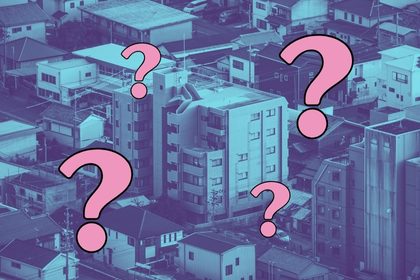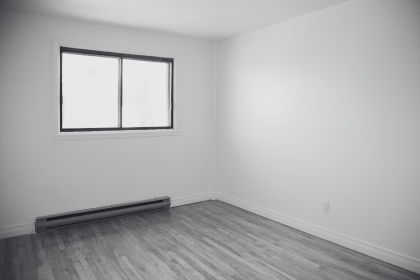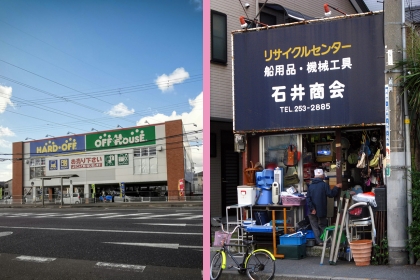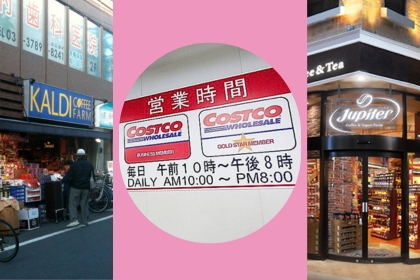Are you getting ready to move to Japan for the JET Programme? Or are you new to JET and want to know about living in Japan?
Hello! My name is SJ. I’ve been a JET-ALT in Minoh, Osaka since 2022.
For anyone unfamiliar with the JET Programme, I’ll briefly explain it. After that, I’ll share tips about moving to Japan!

Hello readers! Sakura Mobile is a SIM & WiFi service provider for international residents and tourists in Japan.
Our global editorial team living in Japan will introduce the charms of the country based on what we have actually experienced and felt.
Table of Contents
What is the JET Programme?
The Japan Exchange and Teaching Programme, or JET for short, is an opportunity to live and work in Japan while promoting cultural exchange for up to 5 years.
About 90% of participants work as an Assistant Language Teacher (ALT). Others work as a Coordinator for International Relations (CIR).
| Job Description | Japanese Language Requirement | |
|---|---|---|
| ALT | Teach English to children | None |
| CIR | Assist local government offices with international exchange activities | At least JLPT N2 |
Scroll right for more →→
Because JET participants are placed across Japan, everyone has different situations.
In Minoh, ALTs have different circumstances because they can be assigned to an elementary school, a junior high school, or a combined elementary and junior high school. Each school has differences in schedule, student population, and work environment.
Thus, ESID for Every Situation Is Different is a common saying in the JET Programme. Keeping that in mind, let’s discuss the JET process for moving to Japan as generally as possible.
What is the JET Programme process for moving to Japan like?
What to expect
JET participants bring a limited amount of luggage. You can expect to slowly settle in.
In my and my friends’ experiences, the first three to six months of the JET Programme are the toughest with adjusting to new personal and professional lives within a foreign culture.
Before I arrived in Minoh, I didn’t know what my apartment would be. I only knew that the city’s Board of Education finds housing for its JET participants that are close to their workplaces.

Photo courtesy of bee32
When I arrived in Minoh, I rented a futon for my first week to give myself time to find a bed that suited my space. I chose a loft bed because I was given a studio apartment of 19 square meters (tiny!), and vertical furniture was the best way to maximize the space. (After two years, I moved to a bigger apartment.)
In addition to a new home, you can expect to prepare specific necessities for your placement. Perhaps you need an international driver’s permit and a car if you’re in a rural area or a commuter pass elsewhere.
No matter what your situation is, you will have support.
Who will help
ESID, of course, but help could come from:
- Your consulate
- Your contracting organization (CO)
- Your predecessor
- Staff from your assigned school

Photo courtesy of Samsam Artistudio
For example, in Minoh, the CO is the Board of Education, and it enlists the help of a local organization that provides services to foreign residents. This organization is called MAFGA (Minoh Association For Global Awareness). It assists the JET participants in many ways, such as calling a clinic to make an appointment, driving them to furniture stores, and transporting their purchases.
Where to buy furnishings
Since I mentioned furniture stores, where are cost-friendly places to buy furnishings in Japan?
For small items such as tableware and boxes or baskets for storage/organization, I shopped at Daiso. Other popular 100-yen stores are Can Do and Seria.
I wanted to be mindful of money for big items because I had to rely on my own savings at first. I bought curtains at Kohnan and bedding from Nitori, but I was hesitant to buy brand-new furniture and appliances from those stores due to the prices. I came to Minoh in early April, and my first paycheck wasn’t until the end of the month.
I went to secondhand stores to save money. Let’s talk about that more!
↑ Go back to the table of contents
How to save money when settling into a new place in Japan
Secondhand stores are your friends
Apartments in Japan are often unfurnished. However, they typically have at least an air conditioner and possibly a refrigerator.
(Of course, ESID.)

Photo courtesy of Nicolas McComber
Buying everything new is expensive. Renting also becomes more expensive than buying your own in the long term.
The solution is to buy from secondhand stores.
In addition to furniture and appliances, I’ve saved money on clothes and hobbies thanks to secondhand stores!
What secondhand stores to go to
There are several reputable companies. Some specialize in certain items, so not every store resells large furniture and electrical appliances.
I recommend Hard Off and Off House for home necessities and interior decorating.
I recommend Second Street and Treasure Factory (a.k.a. TreFac) for clothes.
Because I love manga and video games, my favorite is Book Off. Since moving to Japan, I no longer buy brand-new manga or games because I can find them cheaper and still in excellent condition when used. (Doing hobbies in Japanese is an enjoyable way to study the language!)
To see secondhand stores in your area, look up リサイクル ショップ (“recycle shop”) or リユースショップ (“reuse shop”).

Photo courtesy of Senad Palic and Molly Des Jardin
Is home delivery possible?
Secondhand stores might have a delivery service, but most do not.
Hard Off and Off House allow delivery by a courier service such as Kuroneko Yamato. However, a Japanese phone number may be required.
Having a Japanese phone number will lessen the stress of starting your new life in Japan!
↑ Go back to the table of contents
Do you need a Japanese phone number?
Short answer
Yes.
Long answer
A Japanese phone number is required for many services, such as signing an apartment lease and applying for gym or point card memberships.
For example, I need a Japanese phone number to buy tickets for Magical Mirai.
I’m a huge fan of Vocaloid music, and Magical Mirai is its biggest annual concert. The tickets are sold by lottery instead of “first-come, first-serve” to give a fair chance. A Japanese phone number is necessary because personal information is required on the application to stop people from reselling at a higher price for profit.
To get a Japanese phone number there are many mobile phone plans in Japan.
For the best SIM cards for long-term stays in Japan, be sure to check out the following article!
8 Best SIM Cards for Long-Term Stays in Japan

Photo courtesy of sitthiphong
When choosing a plan, here are three things to be cautious of:
- Inconvenient annual contracts with a two-year minimum are common.
- A Japanese bank account may be required for payment, but you may not be able to open a bank account without a Japanese phone number.
- Some providers have English support, but sometimes, not for all their services. Even if you’re comfortable with Japanese, the contracts may contain unfamiliar terms.
I recommend Sakura Mobile for five reasons.
Benefits of Sakura Mobile
- No annual contract (one-month minimum usage)
- Pick up the SIM card at the JET orientation hotel or have it delivered to your new home
- Paying with international credit/debit cards is OK
- Inexpensive plan with docomo’s fast 4G LTE network for the widest coverage
- Full English support
You can check if your phone is compatible with Sakura Mobile’s physical SIM or eSIM.
Once you have a Japanese phone plan, you can look up secondhand stores and other shops on the go!
Setting up a reliable phone plan is essential for JET participants. Check out our other guides for phone plans below!
↑ Go back to the table of contents
If you miss home comforts
After moving to Japan, it’s understandable if you miss products readily available in your home country. Fortunately, there are ways to get some of those home comforts.

Photo courtesy of Nodar Chernishev
For health and wellness products
iHerb is well-known among JET participants.
I’ve heard that foreigners with curly hair have difficulties finding Japanese substitutes for their hair care products, so they order their usual from iHerb.
For snacks and ingredients
I recommend Kaldi and Jupiter. Both are coffee brands with a huge selection of imported goods.
I’ve seen hummus and salsa at Kaldi and found crispy M&M’s and Albanese World’s Best gummy bears at Jupiter. Both have plenty of American and European chocolates, spices, and sauces from countries outside Japan.
…And there’s Costco!
For Costco lovers, there are currently 33 stores across 21 prefectures.
Many Kirkland products are available at Japanese Costco, but Japanese Costcos sell different items from American Costco, such as Wagyu beef and a greater variety of seafood.
Because not everyone can access Costco, there are unofficial Costco resale stores (コストコ再販店). These stores often remove individual items from bulk packages for those who want to buy smaller units.
There is an online resale store in English called The Flying Pig.

Photos courtesy of Yoichiro Akiyama, Danny Choo, and JUPITER COFFEE Co., Ltd.
Keep an eye out
Be on the lookout at your local stores because you never know what you will chance upon!
In Minoh, I’ve found Old El Paso products at a Yamaya liquor store and Mountain Dew (rare in Japan) at the Mega Don Quijote there. I’ve also tried a famous New Zealand ice cream flavor from a supermarket chain in the Osaka-Kyoto-Kobe region (i.e., I bought hokey pokey at Hankyu Oasis).
↑ Go back to the table of contents
Conclusion
I hope my tips serve you well!
Moving to Japan can be hectic, but please be reassured that there are resources to ease difficulties. You will have support as a JET participant. Money-saving secondhand stores are everywhere. If you’re interested in a SIM from Sakura Mobile, our homepage has more details. Finally, there are places to find home comforts.
I wish you the best!
Other JET Stories and Information
Check out our pages featuring information about the JET Programme from other JET participants sharing their experiences and advice!
5 Things to Know About Fiber Internet in Japan – My Story
↑ Go back to the table of contents
Those looking for an affordable Japanese cellphone plan, check out Sakura Mobile!
CUSTOMER’S VOICE
Features of Sakura Mobile
- Get large amounts of data (maximum 25 GB/month) for only 3,980 JPY/month
- Connection with docomo, the biggest and fastest network in Japan
- Full English Support 7 days a week. The homepage and the “My Page” (where you can check your remaining data, change your plan, terminate your contract, etc.) for users are all in English
- Complete your order online and have it delivered the next day at the earliest
- For those who are not yet in Japan, you can arrange to pick up your SIM card from the airport
Sakura Mobile has helped thousands of new residents and travelers in Japan stay connected during their stay in Japan.
You can find more information about Sakura Mobile’s plans here.


